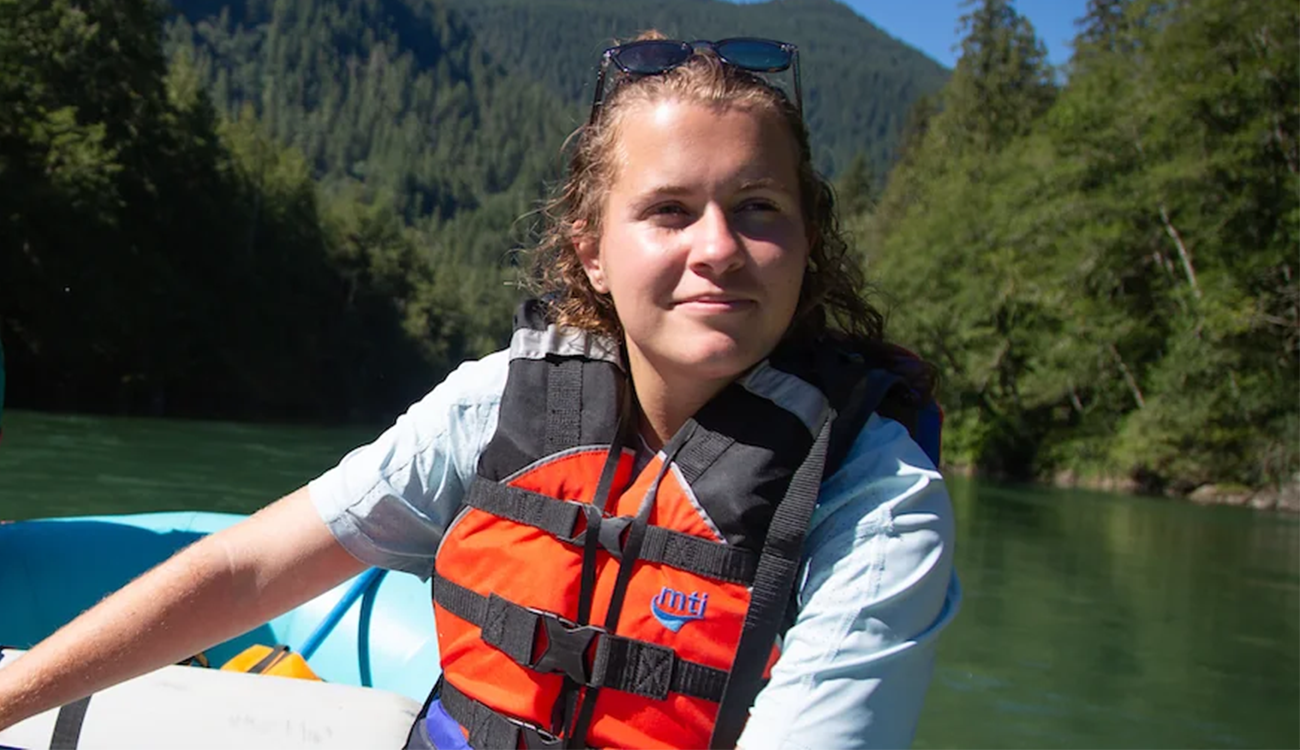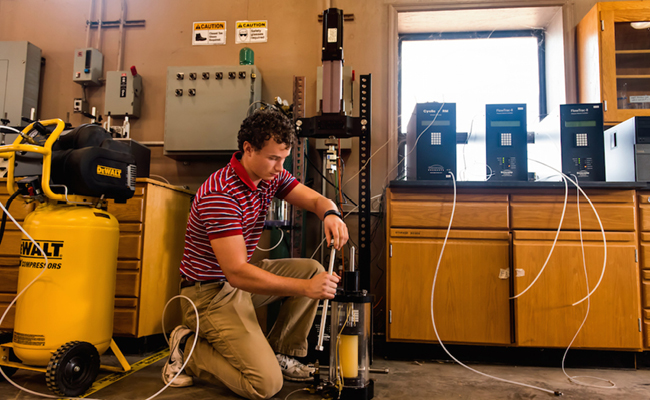Two years ago, Cassidy Hettesheimer was struck by the challenges female athletes in “adventure” sports faced in marketing themselves to fans and sponsors. At the time, the journalism major was interning for the Cascadia Daily News in Washington, and the insights she gained stayed with her.
A senior who is also earning a certificate from UGA’s Carmical Sports Media Institute, Hettesheimer worked for nearly two years on an independent research project, interviewing a mountain biker, a cross-country skier, a kayaker and two climbers under the supervision of Welch Suggs, the institute’s associate director. She then conducted a qualitative analysis of the interview transcripts and looked for re-emerging themes about how the athletes use social media, as well as their perceptions of social media usage.
This week, she will be presented with the Top Student Paper Award at the Summit on Communication and Sport in Los Angeles.
Hettesheimer’s paper, “Outside and online: A gendered analysis of how female adventure athletes utilize social media,” zeroes in on the role social media plays in the professional and personal lives of female adventure sports athletes. She found that while social media provides clear marketing and promotional benefits, the platforms also subject athletes to feelings of unwanted comparison and sexualization.
“There was a universal agreement that it would be more difficult to be in the sport that they are in today, making it a sustainable career, if they didn’t have some form of social media, such as Instagram or TikTok,” said Hettesheimer, a Foundation Fellow at UGA.
With less traditional media attention on adventure sports, compared to more mainstream sports such as football, basketball or tennis, many female adventure sports athletes rely on the marketing power of social media to sustain their careers.

Oftentimes, in solo adventure sports, athletes have less structured pay, with some athletes competing without team contracts and prize money varying depending on performance, Hettesheimer explained. So, sponsorships are a way to bring in more consistent income. With a strong Instagram or TikTok presence, solo athletes are better able to gain brand partnerships and, ultimately, maintain a sustainable career.
Another theme that emerged through Hettesheimer’s conversations was that the athletes were using social media as a space to cultivate community and provide mentorship for young girls and women.
Yet, despite the clear benefits of social media, the athletes interviewed also expressed their susceptibility to feelings of comparison and body dissatisfaction. They noted the pressures of attempting to grow their followings to support their athletic careers while balancing content decisions due to the potential of being overly sexualized online. One of the athletes estimates that her follower base is 80% men.
“Just like for any user, for these athletes, social media can have benefits and drawbacks,” said Hettesheimer. “But, because of the economic potential of the platforms, there’s another added layer to how ‘online’ they feel they need to be.”
Hettesheimer will present her paper at 9 a.m. on Saturday, March 16, on a panel called “Sports as a Challenge to Gender Norms.”
“Cassidy beat out a lot of Ph.D. students to win this award, and this was her first experience doing this kind of in-depth qualitative work,” Suggs said. “This is an international conference that attracts the top scholars in the field, and I’m really proud of Cassidy for producing a paper of this caliber.”
Following graduation in May, Hettesheimer will head to Minnesota to intern for the Minneapolis Star-Tribune.
This story was originally published by the Grady College of Journalism and Mass Communication. You can view that story here.






